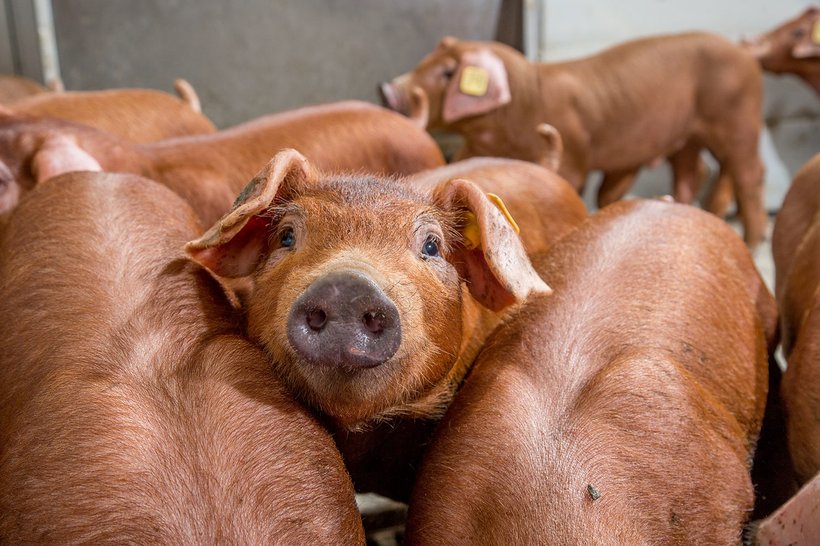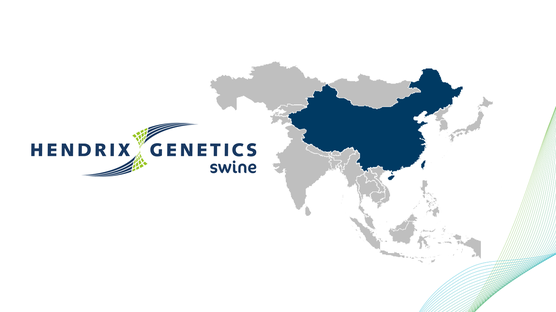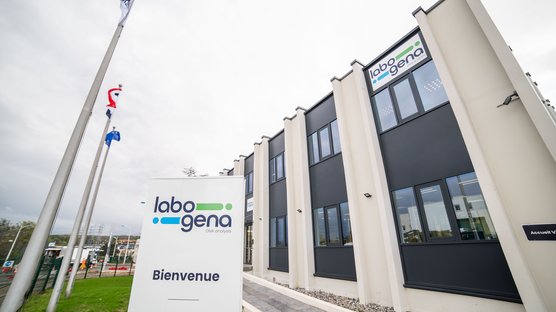
Published on April 30, 2019
The delicate balance between genes, environment, and performance
In the scientific field, the nature vs. nurture debate is the subject of numerous studies when looking at human behavior. Are your actions and personality determined by your genes or by the environment you’re raised in? In many cases, results show that a mixture of the two are at play.
Similarly in animal breeding, the same genetics nurtured in two different environments can impact the performance they exhibit. An animal’s genetic code (or genotype) is linked to different traits, and the interaction between the genotype and the environment can make a difference in performance. This is known as the “genotype by environment” effect (GxE). GxE can be noted at the phenotypic level and can have a major impact on genetic gains. Our balanced breeding programs account for GxE in a number of different ways to ensure that our animals perform well in a commercial environment. Examples from three different species are examined: salmon, layers, turkeys, and swine.
Salmon
Region XII is poised to become a key area of growth for salmon production in Chile. This southern region has colder, less saline water, and an extreme photoperiod compared to the other regions. To produce Atlantic salmon that will thrive in this new environment, specific families must be studied in that setting and selected based on their performance.
An independent study was recently conducted to look at the impact of differing regions of Chile on family performance using Hendrix Genetics sentinels.
Main findings:
- Genetic correlations between traits measured in the two regions (region XI and XII) indicate strong GxE interactions for Atlantic salmon.
- When selecting the 10% best families for production in region XII, based on performance data from that region, an average gain of 804 grams can be realized. This is compared to the selection of families based on data collected in region XI.
- Strong GxE was also present for traits including fillet color, deformity, and maturity.
Our Chilean breeding program in Catripulli, as well as our other sentinel groups in different locations, allow us to select products for each region that will perform in the right environment.
Laying hens
With customers all over the world, it’s necessary that our laying hens are tested in a wide range of environments. Within the Layers R&D department, pedigree birds are raised in commercial environments in approximately 25 locations around the world. Hundreds of thousands of birds are examined and data is collected on their performance. The commercial cross birds tested are the daughters of pre-selected cockerels, and by testing a large number of birds we have the capabilities to gather a large amount of data. Furthermore, we test the offspring of the cockerels in the commercial line in at least two different locations so we can incorporate the effects of management, feed and climate differences into the analysis.
Turkeys
Evaluation of the GxE effect on performance has been a focus for years within the turkey business in order to provide applicable products for our global customer base. Whether through trials on internal research farms or via the many partnerships with customers and universities around the world, research into breeder and commercial performance has provided year over year improvements in both the genetics we offer as well as the management recommendations we provide.
An exciting development within our turkey business is the construction of a new pedigree facility in Europe. This would be in addition to our current pedigree facility in North America. By studying and making selections of pedigree birds, in two separate geographic areas, we can offer products even further tailored to environments and production systems around the world. The pedigree selection program will be supervised by the global R&D team to ensure consistent and high quality process at both locations. With pedigree programs running on two different continents, we can take environmental impact into account when making selections to deliver the right products, now and in the future.
Swine
Within the Swine R&D department, GxE is managed in a number of ways. Swine nucleus farms are located in different regions, including France, Spain and Canada where the animals are fed using the same diet specifications, but the ingredients that make up the diet vary from country to country, or region to region. In addition, by exchanging semen between both Europe and Canada, we have family members in both regions, and we are able to assess how animals perform when eating the local feed ingredients.
For the dam lines, BioHypor is a program where a mini-nucleus is set up within our customers’ production system. These systems are located all over the world and allow us to collect data on reproduction traits in all environments. On top of the reproduction data collected from the nucleus farms, using the BioHypor program, we gather the reproduction data from another 75,000 – 100,000 sows sent in by our customers. Combining the data from these sources allows us to better understand and predict performance in a range of environments.
Within the sire lines, CCPS (combined crossbred & purebred selection) has been set up to test finishing performance of the three way cross under commercial conditions. For this, we test hundreds of offspring from each boar to gather data on how these offspring will perform under commercial conditions. Recently, we have set up a new form of CCPS, where the main focus is on livability. This is a trait with low heritability, and so we test a high number of offspring per boar to get a good differentiation between boars/families.
Every year, our R&D departments work to continuously improve performance. Part of this work involves testing and collecting data from a range of systems to learn more about the interaction between genotype and environment. All this is for the benefit of the value chain to provide efficient, healthy products for the market leading to better breeding today for a brighter life tomorrow.



